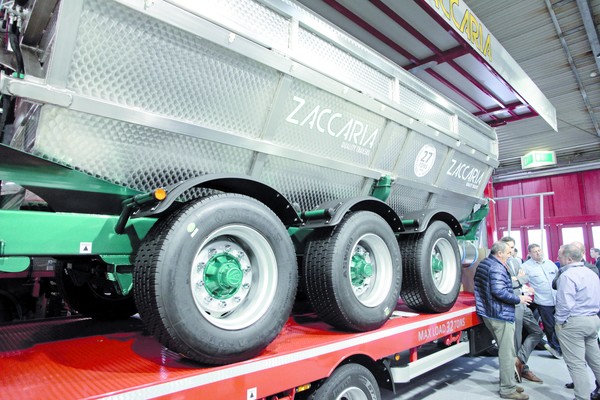
Mother Regulation: technical answers
The FederUnacoma Technical Service evaluates the critical aspects of the application of the Mother Regulation for trailed equipment and provides a list of FAQs
We never stop talking about Mother Regulation. It is interesting how, a year and a half after the entry into force of this type-approval regulation, the topic still holds the bench, and is even enriched with additional insights. Nevertheless, while in the previous articles we focused on tractors, this time the center of attention will be exclusively the towed farm vehicles.
This is because, due also to the fact that these machinery did not necessarily require a European approval, the “new” trailers (R) and interchangeable towed equipment (S) arrived massively on the Italian market in the due technical times, and the critical issues related to the new rules of the game have just begun to rise. Therefore, between the police stopping the users circulating with these new machinery and the users themselves, who are still uncertain about the effectivity of the new limits granted, for most people the picture is still mixed. In light of all this, precisely for reducing or even laying the ghost of a certain skepticism on the part of users to rest, and making this new homologation world more intelligible, the FederUnacoma Technical Service systematically provides information and clarifications to operators with doubts on the application of the new regulation. The Technical Service also provides updated notes answering the users most frequent questions.
Mother Regulation “FAQ”
If I buy a trailer or towed equipment (R/S) Mother Regulation approved, with a technically permissible maximum mass that exceeds the limit of 20 tons indicated by the highway code, can I travel on the road exceeding this limit?
If both the tractor and the R/S vehicle are MR approved, you certainly can. It is possible to drive on the road with masses exceeding 20 tons, as specified in Circular MIT 4485/2016.
If I have a 2003/37 approved (old standard) tractor to which I want to link a Mother Regulation approved R/S with a higher maximum mass of the national R/S counterpart (old standard) but always less than 20 t ., can I circulate as well with that mass according to MR, or should I keep the lowest national value as a reference (provided that the towable mass of the aforementioned tractor is appropriate)?
Also, in this case, the answer is yes. Obviously, the R/S mass value cannot exceed the towable mass of the tractor.
As it is for the circulation of industrial vehicles, is there a limit on the 44-tons agricultural train, that is to say on the maximum mass of the tractor + R/S unit?
Not at the moment, the limitation concerns only industrial vehicles, therefore it is possible to circulate even with larger units. However, given the very important masses involved, it is plausible to think that the Ministry of Transport may intervene with a circular to limit also the agricultural unit, and the chance that this limit is always the same of 44 tons is real.
My vehicle is Mother Regulation approved as interchangeable towed equipment (S): can I drive on the road with the load inside (some users were stopped by the police who raised concerns about this detail)?
An S vehicle, Mother Regulation approved, and to which a scope is acknowledged during the stage of approval, can circulate on the road loaded without any problem. The evaluation error could have arisen from the assimilation of this vehicle to an “old” operating towed agricultural machinery, approved according to the highway code (which could not be recognized as having a scope and therefore could not move loaded on a road) and apply the legislative framework for that machinery. It should be noted, however, that the S machinery in question (MR approved), can circulate on roads loaded only with material functional to the operating cycle of that equipment.
Concerning the maximum mass of my R/S vehicle, a value is written on the plate, while another one is written in the technical annex: it is not clear with which maximum mass I can drive on the roads, nor what I have to do with the vertical load value.
The technically permissible maximum mass (MMTA) of an R/S vehicle is given only by the sum of the mass discharged on the axles and does NOT include the value of the vertical load. The MMTA must be the same both in the technical attachment and in the plate reporting the detail of the mass for each axis, and always keeping the part of the vertical load separate. In short, taking the example of the plate in Fig. 1, where a 4-axis R vehicle was involved (but this would have also applied for an S), with 9 tons of axle load and 4 of vertical load, the technically permissible maximum mass is 36 tons. The 4 t. of the vertical load must be counted in the technically permissible maximum mass of the tractor.
Once the concept of technically permissible maximum mass has been clarified, in practical terms how much can I charge my R/S vehicle?
As shown in Fig. 2, the weighing is carried out with the R/S vehicle linked to the tractor, with the vertical load share falling on the tractor and not included in the weighing. In this way, it is possible to reach 36 tons.








